Abstract
The mechanism of chilling resistance was investigated in 4-week-old plants of the chilling-sensitive cultivated tomato, Lycopersicon esculentum Mill. cv H722, and rooted cuttings of its chilling-resistant wild relative, L. hirsutum Humb. and Bonpl., which were chilled for 3 days at 2°C with a 14-hour photoperiod and light intensity of 250 micromoles per square meter per second. This chilling stress reduced the chlorophyll fluorescence ratio, stomatal conductance, and dry matter accumulation more in the sensitive L. esculentum than in the resistant L. hirsutum. Photosynthetic CO2 uptake at the end of the chilling treatment was reduced more in the resistant L. hirsutum than in L. esculentum, but recovered at a faster rate when the plants were returned to 25°C. The reduction of the spin trap, Tiron, by isolated thylakoids at 750 micromoles per square meter per second light intensity was taken as a relative indication of the tendency for the thylakoids to produce activated oxygen. Thylakoids isolated from the resistant L. hirsutum with or without chilling treatment were essentially similar, whereas those from chilled leaves of L. esculentum reduced more Tiron than the nonchilled controls. Whole chain photosynthetic electron transport was measured on thylakoids isolated from chilled and control leaves of the two species at a range of assay temperatures from 5 to 25°C. In both species, electron transport of the thylakoids from chilled leaves was lower than the controls when measured at 25°C, and electron transport declined as the assay temperature was reduced. However, the temperature sensitivity of thylakoids from chilled L. esculentum was altered such that at all temperatures below 20°C, the rate of electron transport exceeded the control values. In contrast, the thylakoids from chilled L. hirsutum maintained their temperature sensitivity, and the electron transport rates were proportionately reduced at all temperatures. This sublethal chilling stress caused no significant changes in thylakoid galactolipid, phospholipid, or protein levels in either species. Nonchilled thylakoid membranes from L. hirsutum had fourfold higher levels of the fatty acid 16:1, than those from L. esculentum. Chilling caused retailoring of the acyl chains in L. hirsutum but not in L. esculentum. The chilling resistance of L. hirsutum may be related to an ability to reduce the potential for free radical production by close regulation of electron transport within the chloroplast.
Full text
PDF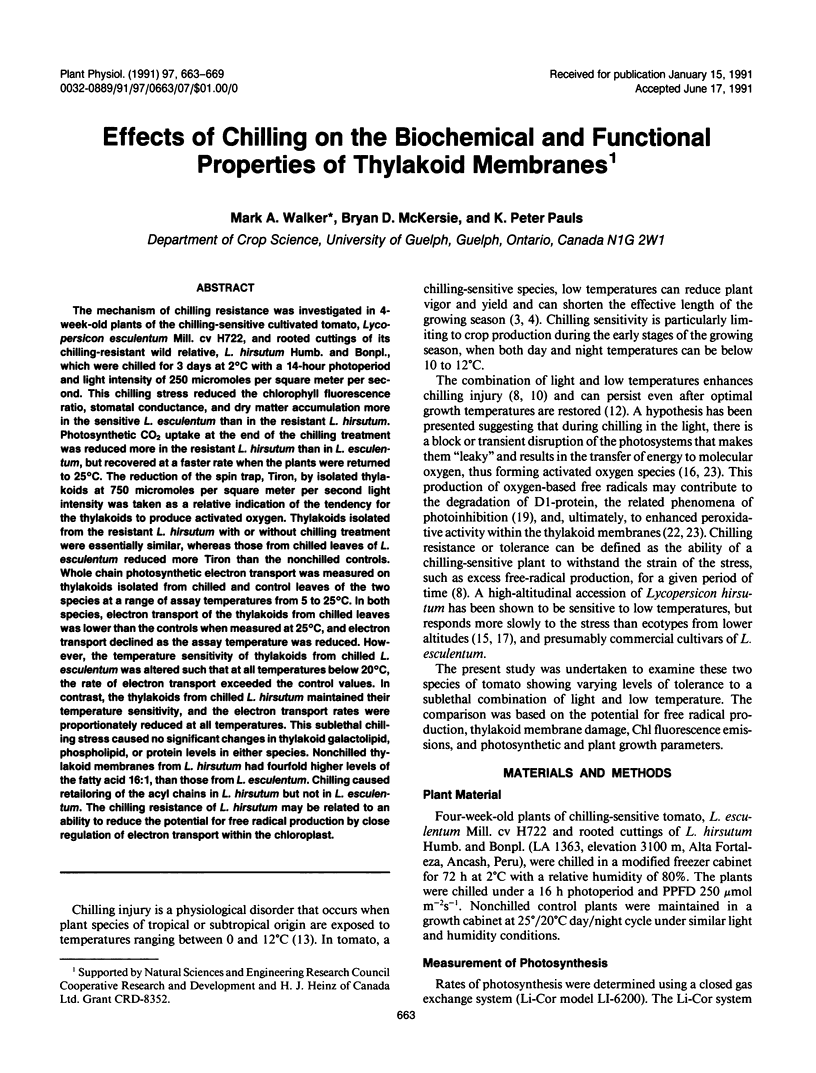
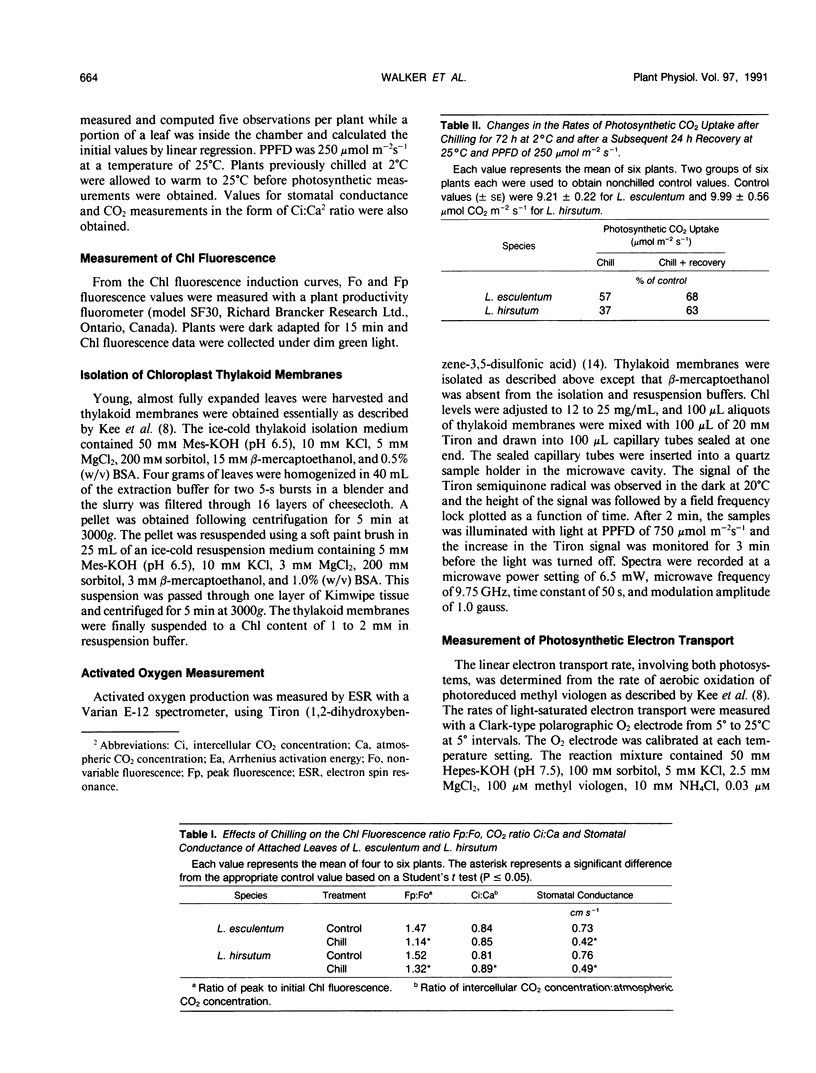
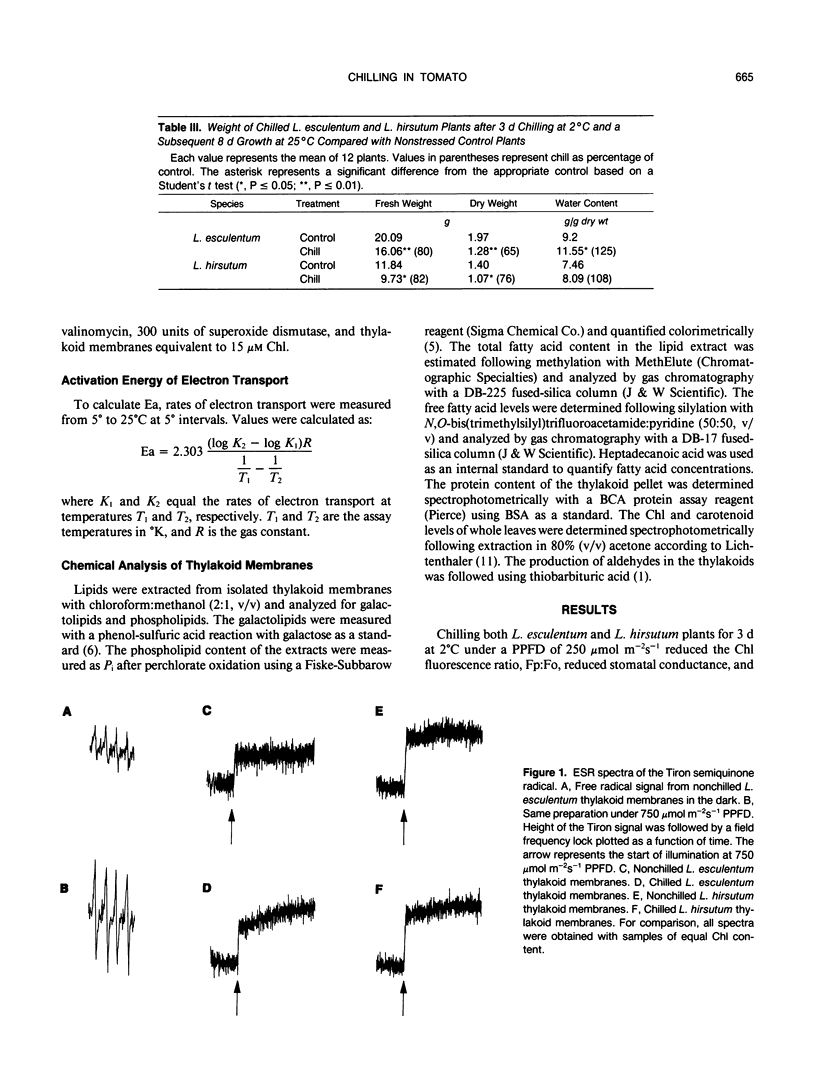
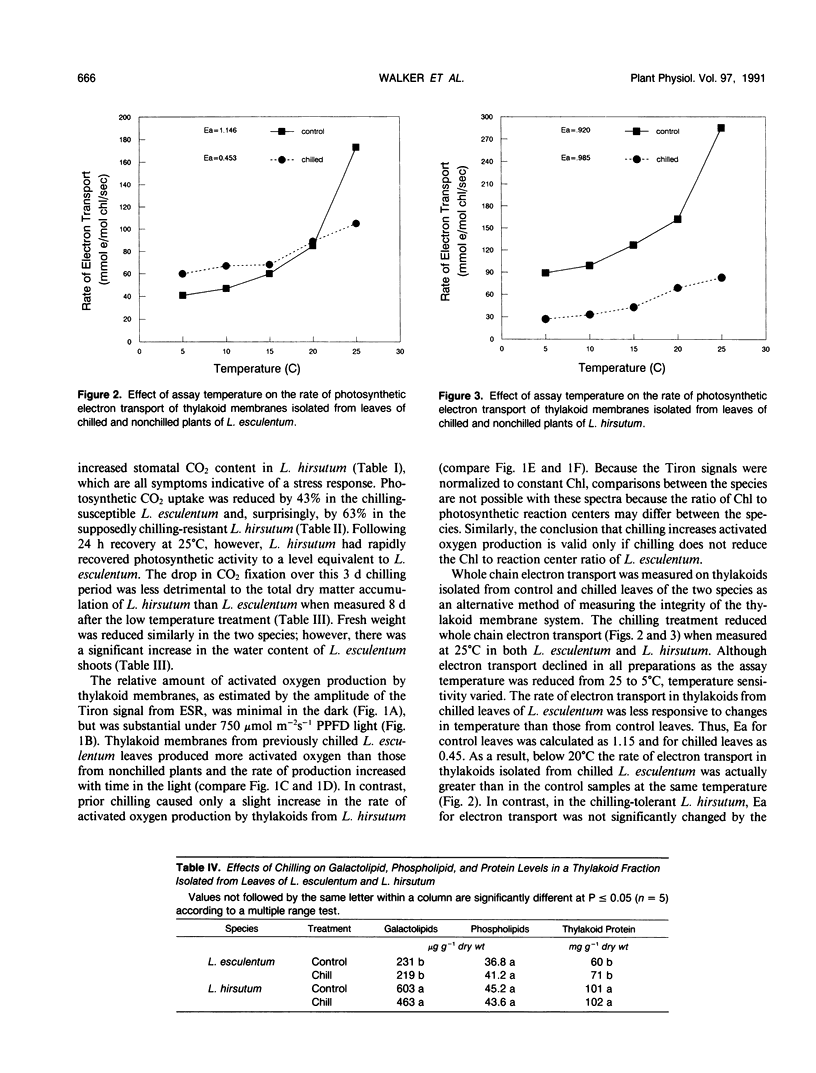
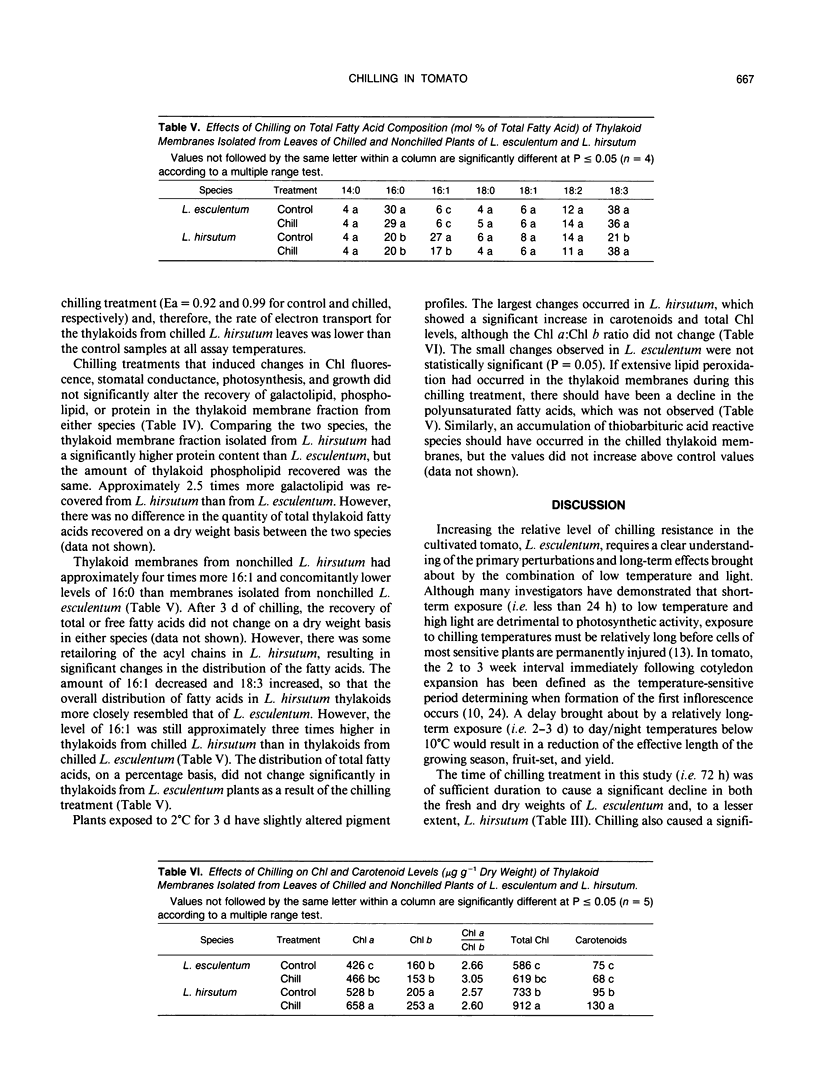
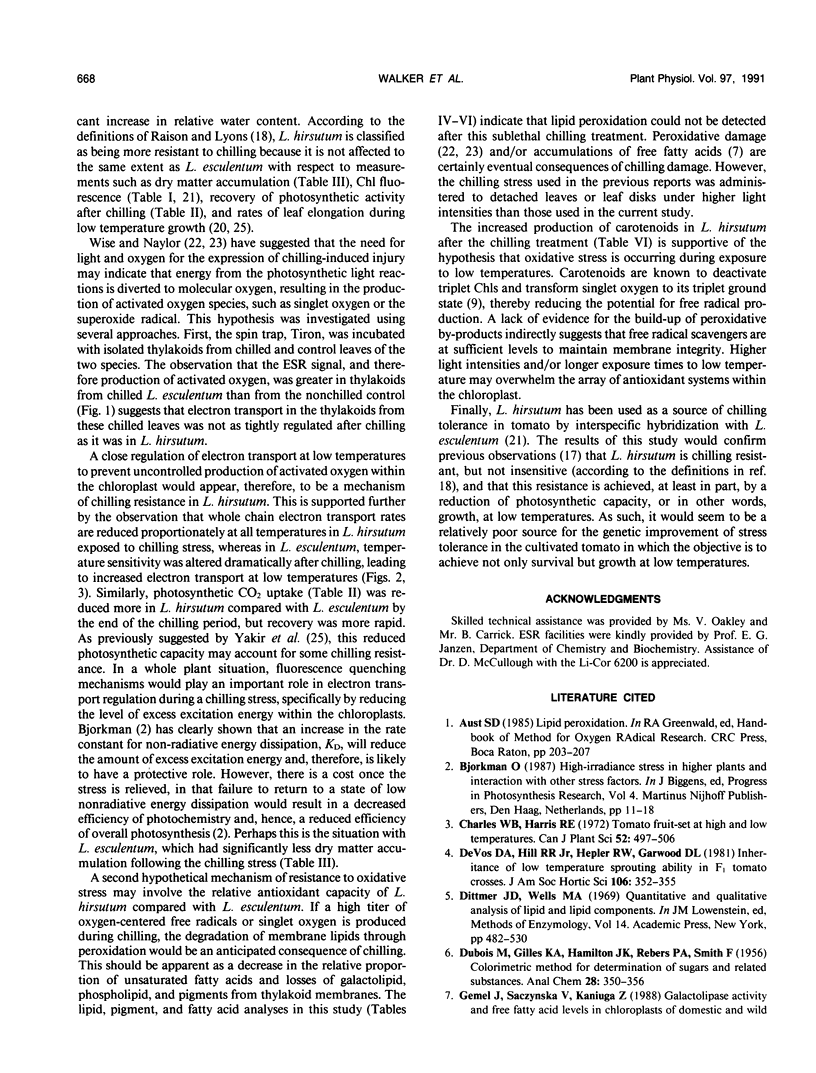
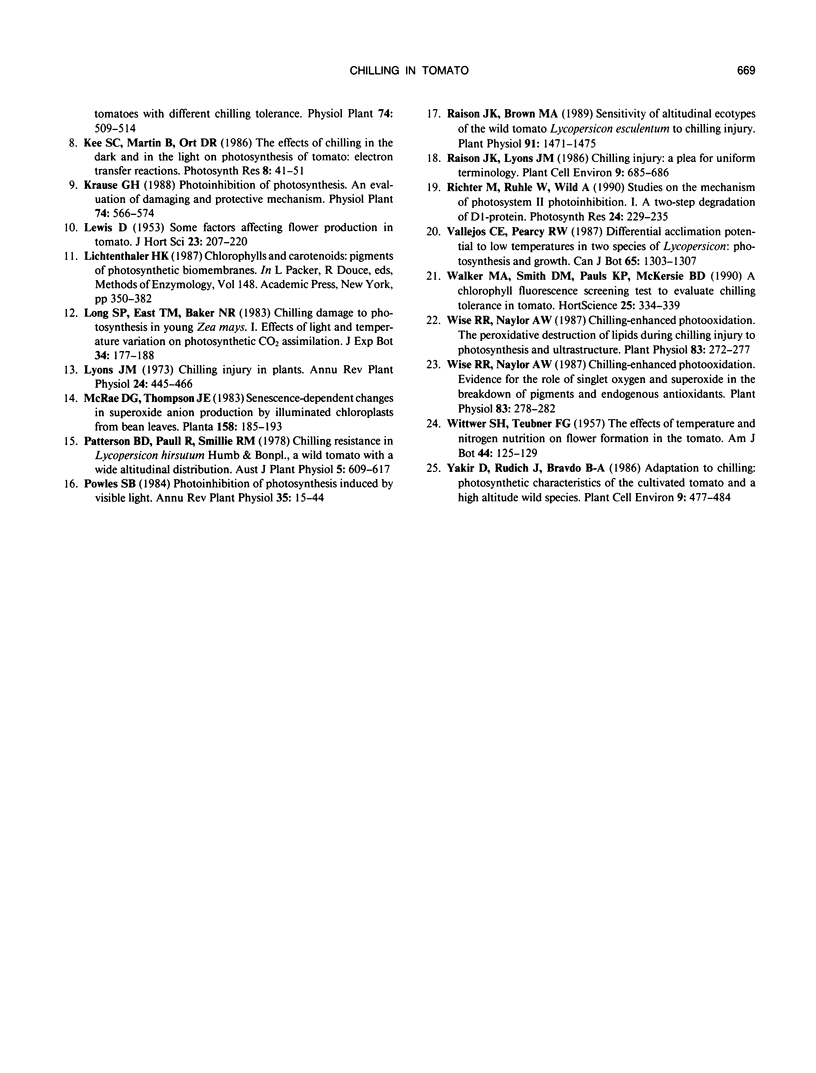
Selected References
These references are in PubMed. This may not be the complete list of references from this article.
- Raison J. K., Brown M. A. Sensitivity of Altitudinal Ecotypes of the Wild Tomato Lycopersicon hirsutum to Chilling Injury. Plant Physiol. 1989 Dec;91(4):1471–1475. doi: 10.1104/pp.91.4.1471. [DOI] [PMC free article] [PubMed] [Google Scholar]
- Wise R. R., Naylor A. W. Chilling-Enhanced Photooxidation : The Peroxidative Destruction of Lipids during Chilling Injury to Photosynthesis and Ultrastructure. Plant Physiol. 1987 Feb;83(2):272–277. doi: 10.1104/pp.83.2.272. [DOI] [PMC free article] [PubMed] [Google Scholar]
- Wise R. R., Naylor A. W. Chilling-enhanced photooxidation : evidence for the role of singlet oxygen and superoxide in the breakdown of pigments and endogenous antioxidants. Plant Physiol. 1987 Feb;83(2):278–282. doi: 10.1104/pp.83.2.278. [DOI] [PMC free article] [PubMed] [Google Scholar]


